-
 Bitcoin
Bitcoin $106,754.6083
1.33% -
 Ethereum
Ethereum $2,625.8249
3.80% -
 Tether USDt
Tether USDt $1.0001
-0.03% -
 XRP
XRP $2.1891
1.67% -
 BNB
BNB $654.5220
0.66% -
 Solana
Solana $156.9428
7.28% -
 USDC
USDC $0.9998
0.00% -
 Dogecoin
Dogecoin $0.1780
1.14% -
 TRON
TRON $0.2706
-0.16% -
 Cardano
Cardano $0.6470
2.77% -
 Hyperliquid
Hyperliquid $44.6467
10.24% -
 Sui
Sui $3.1128
3.86% -
 Bitcoin Cash
Bitcoin Cash $455.7646
3.00% -
 Chainlink
Chainlink $13.6858
4.08% -
 UNUS SED LEO
UNUS SED LEO $9.2682
0.21% -
 Avalanche
Avalanche $19.7433
3.79% -
 Stellar
Stellar $0.2616
1.64% -
 Toncoin
Toncoin $3.0222
2.19% -
 Shiba Inu
Shiba Inu $0.0...01220
1.49% -
 Hedera
Hedera $0.1580
2.75% -
 Litecoin
Litecoin $87.4964
2.29% -
 Polkadot
Polkadot $3.8958
3.05% -
 Ethena USDe
Ethena USDe $1.0000
-0.04% -
 Monero
Monero $317.2263
0.26% -
 Bitget Token
Bitget Token $4.5985
1.68% -
 Dai
Dai $0.9999
0.00% -
 Pepe
Pepe $0.0...01140
2.44% -
 Uniswap
Uniswap $7.6065
5.29% -
 Pi
Pi $0.6042
-2.00% -
 Aave
Aave $289.6343
6.02%
What does the appearance of the double bottom pattern of the WR Williams indicator mean? Can I buy the bottom?
The Williams %R double bottom pattern signals a potential bullish reversal in crypto trading, especially when confirmed by volume and price action.
Jun 16, 2025 at 01:01 pm
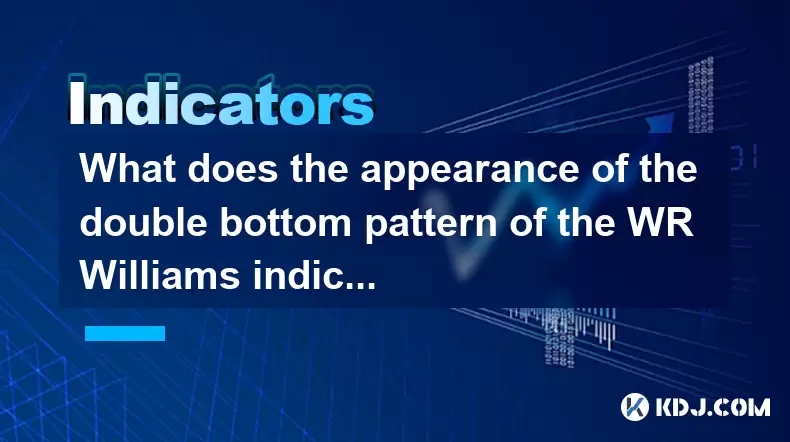
Understanding the WR Williams Indicator
The WR (Williams %R) is a momentum oscillator used in technical analysis to identify overbought and oversold levels in trading. Developed by Larry Williams, this indicator oscillates between 0 and -100. A reading above -20 typically indicates overbought conditions, while a reading below -80 signals oversold territory.
In the context of cryptocurrency trading, where volatility is high and price movements can be sharp, the WR indicator helps traders anticipate potential reversals. Traders often look for specific patterns within the WR chart to make informed decisions about entry and exit points.
What Is the Double Bottom Pattern in WR?
A double bottom pattern in the WR Williams indicator appears when the indicator forms two distinct lows around the -80 level, with a moderate peak separating them. This pattern suggests that the downward momentum has weakened and may reverse soon.
Visually, it resembles the letter "W" on the WR chart. The first low occurs during a downtrend, followed by a rebound, and then another decline that fails to break below the previous low. The second low confirms the pattern if it holds above the prior low and starts rising afterward.
This formation is significant because it reflects increasing buying pressure after a prolonged bearish phase. In crypto markets, such patterns are often seen before major trend reversals, especially after strong sell-offs.
Interpreting the Double Bottom Pattern
When the WR indicator shows a double bottom pattern, it signals a possible bullish reversal. Here’s how to interpret it:
- First Low: The indicator drops below -80, indicating extreme bearishness.
- Rebound: Price stabilizes, and the WR moves upward, suggesting reduced selling pressure.
- Second Low: The indicator dips again but doesn’t reach the same depth as the first low.
- Confirmation: After the second low, the WR rises above the midpoint between the two lows, confirming the reversal.
Traders should pay attention to volume and candlestick formations alongside the WR to confirm the strength of the reversal. In crypto trading, where false signals are common, cross-verifying with other indicators like RSI or MACD is essential.
Can You Buy the Bottom Based on the Double Bottom Pattern?
Yes, you can consider buying when a double bottom pattern appears on the WR Williams indicator, but only after confirming the pattern through additional filters:
- Price Action Confirmation: Wait until the price breaks above the resistance formed between the two bottoms.
- Volume Increase: Look for a noticeable increase in volume when the price begins to rise after the second low.
- Candlestick Reversal Patterns: Presence of bullish candles like hammer, engulfing, or morning star near the second bottom adds confidence.
- Support Levels: Ensure the double bottom forms near a key support zone or moving average.
It's not advisable to enter immediately at the second bottom without confirmation. Instead, waiting for the WR to move above the midpoint of the two lows or for the price to close above the swing high between the two lows can provide a safer entry point.
How to Trade the Double Bottom Pattern Using WR: Step-by-Step Guide
Here’s a detailed guide on how to trade the double bottom pattern using the WR Williams indicator in cryptocurrency trading:
- Identify the First Low: Watch for the WR dropping below -80. This marks the start of the potential pattern.
- Observe the Rebound: Track the WR rising from the first low. This phase may take several candles depending on the time frame.
- Detect the Second Low: The WR falls again but does not drop below the previous low and starts rising again.
- Draw the Neckline: Connect the high point between the two lows to form a neckline.
- Confirm Breakout: Enter a long position once the WR crosses above the neckline or when the price closes above the swing high.
- Set Stop Loss: Place a stop loss slightly below the second low to protect against false breakouts.
- Target Profit Levels: Use Fibonacci retracement or previous resistance levels as profit targets.
For example, if Bitcoin drops sharply and the WR hits -90, then rebounds to -50, then pulls back to -85 without breaking the prior low, and finally rises above -50 again — this could signal a strong buy opportunity.
Risks and Considerations When Trading the Double Bottom Pattern
Despite being a powerful reversal pattern, the double bottom in WR comes with risks:
- False Signals: Especially in highly volatile crypto markets, the WR can give misleading signals.
- Whipsaws: Sudden spikes and retracements may trigger stop losses before the pattern fully plays out.
- Time Frame Sensitivity: The effectiveness of the pattern varies across different chart time frames (e.g., 1-hour vs daily).
- Market Conditions: In strongly trending markets, reversal patterns may fail more frequently than in ranging markets.
To mitigate these risks, always use proper risk management techniques and combine the WR with other tools like moving averages or volume profiles.
Frequently Asked Questions
Q: Can the double bottom pattern appear on any cryptocurrency pair?
Yes, the double bottom pattern can occur on any crypto pair, including BTC/USDT, ETH/USDT, and altcoin pairs. However, its reliability tends to be higher on major pairs with sufficient liquidity and volume.
Q: How long should I wait after the second low to confirm the pattern?
Ideally, wait for at least one full candlestick to close above the swing high between the two lows. On the 4-hour chart, this would mean waiting 4 hours after the breakout.
Q: Should I rely solely on the WR indicator for trading the double bottom pattern?
No, it’s not recommended. Always use supporting indicators like RSI, MACD, or volume analysis to improve the accuracy of your trades.
Q: What is the ideal stop loss placement when trading the double bottom in WR?
Place the stop loss just below the second low of the pattern. This ensures minimal risk exposure while giving the trade room to develop.
Disclaimer:info@kdj.com
The information provided is not trading advice. kdj.com does not assume any responsibility for any investments made based on the information provided in this article. Cryptocurrencies are highly volatile and it is highly recommended that you invest with caution after thorough research!
If you believe that the content used on this website infringes your copyright, please contact us immediately (info@kdj.com) and we will delete it promptly.
- 2025-W Uncirculated American Gold Eagle and Dr. Vera Rubin Quarter Mark New Products
- 2025-06-13 06:25:13
- Ruvi AI (RVU) Leverages Blockchain and Artificial Intelligence to Disrupt Marketing, Entertainment, and Finance
- 2025-06-13 07:05:12
- H100 Group AB Raises 101 Million SEK (Approximately $10.6 Million) to Bolster Bitcoin Reserves
- 2025-06-13 06:25:13
- Galaxy Digital CEO Mike Novogratz Says Bitcoin Will Replace Gold and Go to $1,000,000
- 2025-06-13 06:45:13
- Trust Wallet Token (TWT) Price Drops 5.7% as RWA Integration Plans Ignite Excitement
- 2025-06-13 06:45:13
- Ethereum (ETH) Is in the Second Phase of a Three-Stage Market Cycle
- 2025-06-13 07:25:13
Related knowledge

How to confirm the effectiveness of the average price line support in the time-sharing chart?
Jun 17,2025 at 12:56am
Understanding the Time-Sharing Chart and Its RelevanceIn cryptocurrency trading, time-sharing charts play a crucial role in analyzing short-term price movements. These charts typically display price fluctuations over a specific period, often ranging from minutes to hours. Traders rely on them to make quick decisions based on real-time data. The average ...

What does it mean when the momentum indicator breaks above the zero axis?
Jun 17,2025 at 12:43am
Understanding the Momentum IndicatorThe momentum indicator is a technical analysis tool used to measure the speed or velocity of price movements in cryptocurrency markets. It helps traders identify potential trend reversals, overbought or oversold conditions, and confirms existing trends. The indicator typically oscillates around a zero line, with value...
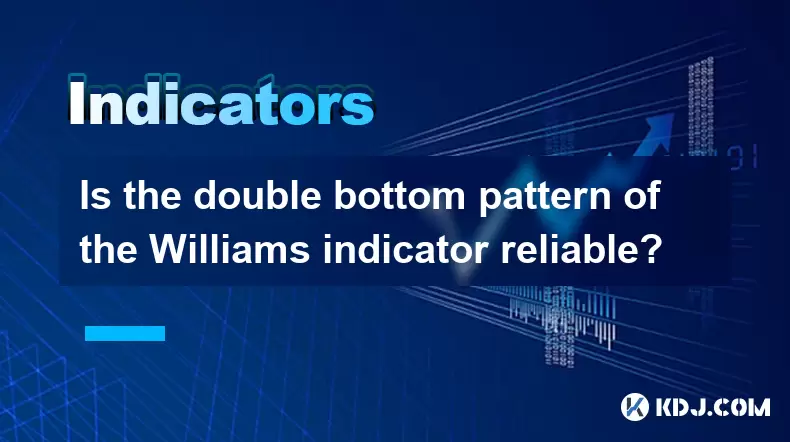
Is the double bottom pattern of the Williams indicator reliable?
Jun 17,2025 at 03:56am
Understanding the Williams Indicator and Its SignificanceThe Williams %R indicator, often referred to as Williams Percent Range, is a momentum oscillator used in technical analysis to identify overbought or oversold conditions in the market. Developed by Larry Williams, this indicator fluctuates between 0 and -100, with readings above -20 indicating ove...
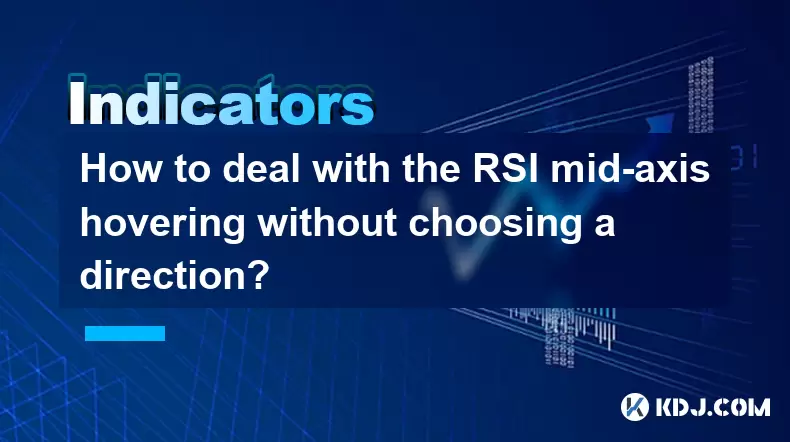
How to deal with the RSI mid-axis hovering without choosing a direction?
Jun 17,2025 at 02:02am
Understanding RSI Mid-Axis Hovering in Cryptocurrency TradingThe Relative Strength Index (RSI) is a popular momentum oscillator used by traders to assess whether an asset is overbought or oversold. In cryptocurrency markets, it's common for the RSI to hover around its mid-axis, typically at the 50 level, without showing a clear upward or downward trend....
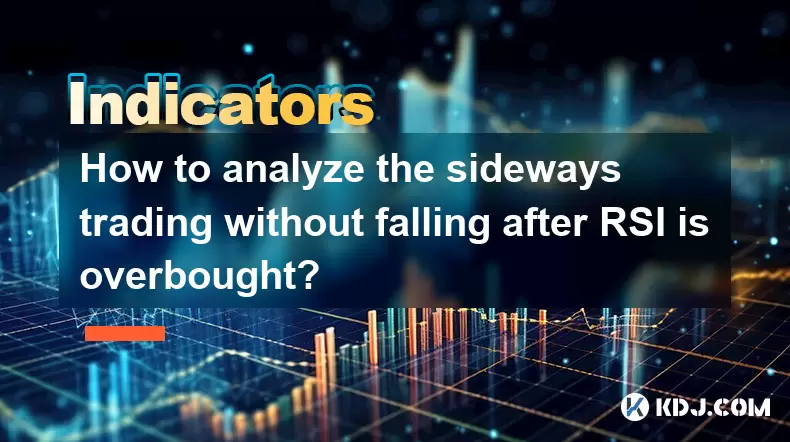
How to analyze the sideways trading without falling after RSI is overbought?
Jun 17,2025 at 04:14am
Understanding RSI and Its Role in Cryptocurrency TradingThe Relative Strength Index (RSI) is a momentum oscillator used to measure the speed and change of price movements. In the context of cryptocurrency trading, it helps traders identify potential overbought or oversold conditions. When the RSI exceeds 70, it typically signals that an asset may be ove...
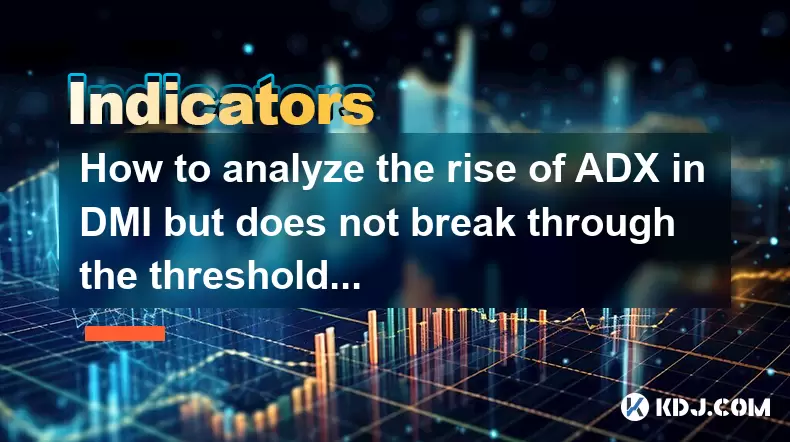
How to analyze the rise of ADX in DMI but does not break through the threshold?
Jun 16,2025 at 11:49pm
Understanding ADX and DMI in Cryptocurrency TradingIn cryptocurrency trading, ADX (Average Directional Index) is a technical indicator used to measure the strength of a trend. It works in conjunction with the DMI (Directional Movement Indicator), which includes two components: +DI (Positive Directional Indicator) and -DI (Negative Directional Indicator)...

How to confirm the effectiveness of the average price line support in the time-sharing chart?
Jun 17,2025 at 12:56am
Understanding the Time-Sharing Chart and Its RelevanceIn cryptocurrency trading, time-sharing charts play a crucial role in analyzing short-term price movements. These charts typically display price fluctuations over a specific period, often ranging from minutes to hours. Traders rely on them to make quick decisions based on real-time data. The average ...

What does it mean when the momentum indicator breaks above the zero axis?
Jun 17,2025 at 12:43am
Understanding the Momentum IndicatorThe momentum indicator is a technical analysis tool used to measure the speed or velocity of price movements in cryptocurrency markets. It helps traders identify potential trend reversals, overbought or oversold conditions, and confirms existing trends. The indicator typically oscillates around a zero line, with value...

Is the double bottom pattern of the Williams indicator reliable?
Jun 17,2025 at 03:56am
Understanding the Williams Indicator and Its SignificanceThe Williams %R indicator, often referred to as Williams Percent Range, is a momentum oscillator used in technical analysis to identify overbought or oversold conditions in the market. Developed by Larry Williams, this indicator fluctuates between 0 and -100, with readings above -20 indicating ove...

How to deal with the RSI mid-axis hovering without choosing a direction?
Jun 17,2025 at 02:02am
Understanding RSI Mid-Axis Hovering in Cryptocurrency TradingThe Relative Strength Index (RSI) is a popular momentum oscillator used by traders to assess whether an asset is overbought or oversold. In cryptocurrency markets, it's common for the RSI to hover around its mid-axis, typically at the 50 level, without showing a clear upward or downward trend....

How to analyze the sideways trading without falling after RSI is overbought?
Jun 17,2025 at 04:14am
Understanding RSI and Its Role in Cryptocurrency TradingThe Relative Strength Index (RSI) is a momentum oscillator used to measure the speed and change of price movements. In the context of cryptocurrency trading, it helps traders identify potential overbought or oversold conditions. When the RSI exceeds 70, it typically signals that an asset may be ove...

How to analyze the rise of ADX in DMI but does not break through the threshold?
Jun 16,2025 at 11:49pm
Understanding ADX and DMI in Cryptocurrency TradingIn cryptocurrency trading, ADX (Average Directional Index) is a technical indicator used to measure the strength of a trend. It works in conjunction with the DMI (Directional Movement Indicator), which includes two components: +DI (Positive Directional Indicator) and -DI (Negative Directional Indicator)...
See all articles

























































































